
Sustainability and Green Development in Russia: Trends and Forecasts
Tom Mundy, Ksenia Agapova, Alexander Сhurikov, Gyunay GuseynIn this paper, we look in more detail at the growth of sustainable development in Moscow and assess the relative advantages to both landlords and tenants of sustainability certification. We consider the advantages, such as demand from environmentally aware companies, better brand 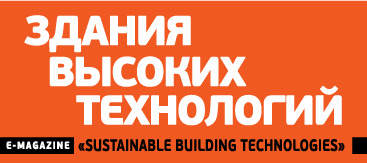 recognition, improved costs and rental premiums. From a financial perspective, we also acknowledge the longer payback time for green developments, and the risks that presents in Russia’s increasingly volatile economic environment.
recognition, improved costs and rental premiums. From a financial perspective, we also acknowledge the longer payback time for green developments, and the risks that presents in Russia’s increasingly volatile economic environment.
Current Situation
Green certification is not yet a strong market trend in Russia, given its relatively short history compared to nearly 25‑years of Green Development in the US and Western Europe. Nevertheless, after a slow start, the popularity of environmentally friendly and energy efficient buildings is increasing almost exponentially.
One of the key drivers for the Green Development in Russia has been the adoption of the new Law on Energy Efficiency in 2009, followed by heightened market expectations of a further tightening of environmental legislation. Moreover, the first state standard (GOST) for green building construction in Russia was adopted only in 2013.
The number of BREEAM and LEED certified projects in Russia has grown rapidly from only two schemes seen in 2010 to 43 objects by the end of Q3 2014. In 2013 alone the number of certified buildings increased by 21.
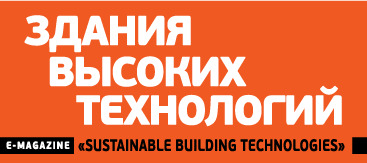
Around 60 % of these certifications are related to the office segment, most of which belongs to Prime offices, yet the total green office stock is still negligible compare to the whole market accounting for about 3 % of total office stock in Moscow.
The well-known Class A Ducat Place III was the first office building in Moscow certified using the BREEAM assessment method. green industrial premises represent about a quarter of total certified projects in Russia, including SKF factory in Tver, the first LEED certified project, and BREEAM certified Industrial Park South Gate in Moscow region. Triumph Park Residential Complex in Saint-Petersburg is the first and yet the only residential project in Russia assessed using the sustainable building certification scheme.
The recent Sochi Olympic Games 2014 are a clear example of large-scale eco-construction in Russia. The principles of green standards were a contractual obligation for investors and contractors of Olympstroy, the state company that supervised the construction of the games.
According to official sources, construction has been carried out with the use of environmentally friendly materials. Several satellite surveillance systems, aimed to ensure continuous environmental monitoring, have been installed at all facilities. As a result, 5 Olympic objects were certified on design stage only (Design Certificate) and 3 achieved final BREEAM certifications on a post construction stage.
Drivers of Growth
We attribute the recent rapid acceleration in green certification to a combination of changing environmental regulations, growing demand from tenants, the cache that comes from brand recognition and the opportunity to benefit from cost efficiency in the future. Below we look at these four drivers in more detail.
|
|
| White Square Office Center is certified under Bream Good (Moscow, Russia) |
Environmental Regulations
Russia is just catching up with the developed markets in terms of environmental legislation. The Law on the Energy Efficiency was adopted in 2009 in Russia, while the first GOST for ecological requirements in construction appeared only in 2013. Following the adoption of the Energy Efficiency Law, the amendments to the Tax Code also took place, outlining the possibility of lowering the tax burden for businesses, which use energy-efficient appliances.
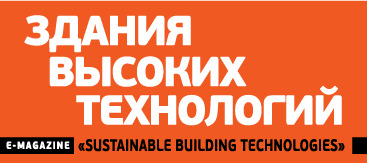 The new legislation has also influenced market participants as, for example, some Russian banks started offering loans for the purchase of energy efficient equipment. We believe that the role of Russian government in the environmental regulation will gradually grow further.
The new legislation has also influenced market participants as, for example, some Russian banks started offering loans for the purchase of energy efficient equipment. We believe that the role of Russian government in the environmental regulation will gradually grow further.
Growing Demand from Tenants
In the Moscow office market, buildings with LEED and BREEAM certificates are most popular among international companies. For many multinational companies with established sustainability policies, such as Siemens, Decathlon, Shell or Deutsche Bank, meeting ecological standards could be a key factor for choosing office premises. We believe that domestic companies will pay more attention to green buildings in the future following the gradual saturation of the market. In particular, de mand for green buildings will likely be seen from capital intensive sectors with a high share of expenditures on employees ‘well-being and health, for example IT, consulting companies and banks. Ecological certification schemes have specific requirements for lighting and indoor air quality, which, in turn, are believed to increase employees’ productivity and lower health-related absenteeism, making green office space more attractive for tenants than the regular one.
Brand Recognition
Given the expected pressure on landlord’s margins, being green will prove to be a selling point for both expensive Prime offices in the center of Moscow and for objects outside the MKAD, which are considered as more environmentally friendly alternative for offices in the city center.
Future Cost Efficiency
According to some estimates, cost savings on utility bills can be up to 30 %. However, the cost efficiency of Green Development in Russia is still hard to quantify due to the relatively small number of certified buildings.
As we have noted above, though the benefits of adopting green certification are reasonably well known in the US and Europe, in Russia the concept is still in a nascent phase and continues to face challenges.
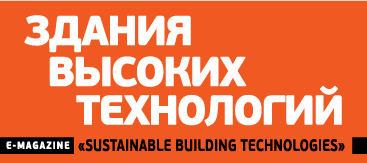 Lack of Knowledge Base and Small Number of Market Professionals Currently, Russia has an acute shortage of specialists of all levels (from public employees to engineers), who have enough expertise and a clear understanding of the Green Development concept and certification process.
Lack of Knowledge Base and Small Number of Market Professionals Currently, Russia has an acute shortage of specialists of all levels (from public employees to engineers), who have enough expertise and a clear understanding of the Green Development concept and certification process.
Controversial Role of the Government
On the one hand, the government in Russia is seemingly making progress in adopting new environmental laws, although they are not severe compared to Western Europe and US. Russian state construction standards (GOST and SNiP), which are based on the principles of energy efficiency do not cover the whole scope of ecological requirements and aspects of energy efficiency. In other words, the energy passport for the building, the document necessary for obtaining an operational permit, is based on SNiPs and other state and local standards describing the requirements for energy efficiency while green GOSTs are still not mandatory for obtaining an operational permit.
Since the Russian economy depends heavily on raw materials and Russian government historically has a strong position on domestic energy market, we find it surprising that as the main supplier it is not interested in reducing energy consumption by the end customers. In our view, the slow changes in adopting more rigid environmental laws could also be attributed to this paradox.
Mentality of Russian Consumer
Given the historical availability and affordability of natural resources in Russia, it takes time to develop a habit of moderate and rational use of energy by consumer, which, in turn, supports the wider spread of Green Development in Russia. We believe the current situation should change with the further growth of energy prices as well as tightening of environmental legislation.
Capital Expenditures Vs. Cost Savings: Still Questionable for Russia
Green Development is associated with higher initial investments linked to specific technologies, materials and procedures necessary for the construction process of a green building. Moreover, the specific risks of construction business in Russia (volatility of the national currency, limited access to credit, the high cost of funding etc.), often force developers to choose projects with a shorter payback periods to those with expected higher cash flows in longer term. For green construction projects in Russia, the average payback period ranges from 8 to 15 years, making it questionable for many developers to implement these projects in highly risky and volatile environment. The rationality behind the capital expenditures in green construction is also complicated by the inflationary pressure on construction costs and a recent hike in taxation given the new tax base system based on cadastral valuation.
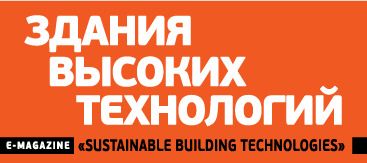
Given that the beginning of Green Development in Russia coincided with the crisis of 2008–2009, we think that there is considerable potential demand for such buildings and we do expect the further rise in number of green buildings in the near-term. Indeed, the popularity of this trend continues to grow as the number of certified buildings grows rapidly. There were only two certified buildings back in 2010, compared to 43 schemes in Q3 2014 with the total area of more than 2 million m2. Moreover, by the end of 2015 the total amount of green supply will likely increase by another 1,5 million m2.
We expect that ecological legislation will undergo considerable changes in coming years leading to greater social awareness and further promotion of the Green Development in Russia. As the Sochi Olympic Games demonstrated, we believe that the World Cup 2018 could be another driver for further development of green trend in Russia. ●